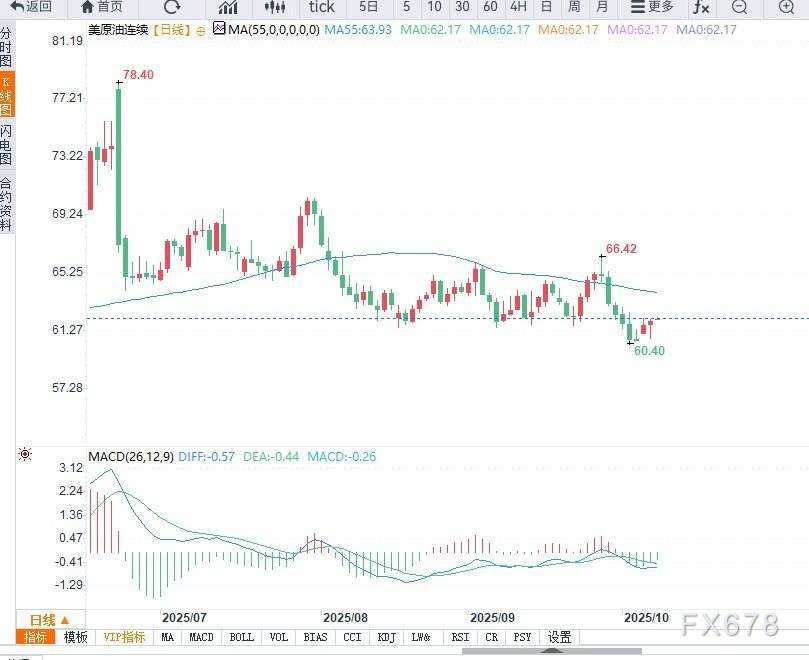U.S. crude oil futures extended their rebound during the Asian session on Wednesday, bolstered by the ‘one increase and two decreases’ inventory report released by the American Petroleum Institute (API).
Data showed that for the week ending October 3, U.S. crude oil inventories increased by approximately 2.8 million barrels, far exceeding market expectations of 2.3 million barrels, while a decline of 3.7 million barrels was recorded in the previous week.
In contrast, gasoline inventories fell by 1.3 million barrels, and distillate inventories, including diesel and heating oil, declined by 1.8 million barrels, indicating robust end-user consumption demand.

 WTI crude oil futures (the U.S. benchmark oil price) rose to $62.04 per barrel after the report was released, slightly up by about 0.5% from the intraday settlement price of $61.73.
WTI crude oil futures (the U.S. benchmark oil price) rose to $62.04 per barrel after the report was released, slightly up by about 0.5% from the intraday settlement price of $61.73.
Market analysts believe that this week’s API report sent mixed signals: crude oil supply continued to grow, but the drop in refined product inventories reflected a recovering demand side.
Traders are widely focusing on the official inventory data to be released by the U.S. Energy Information Administration (EIA) on Wednesday to verify the trend indicated in the API report.
Energy strategist John Kilduff (Again Capital) noted: “The increase in crude oil inventories indicates that refinery processing activity may have lagged in its recovery pace, but the declines in gasoline and diesel inventories demonstrate that consumer demand remains stable. If the EIA data confirms this trend, oil prices may remain firm within the $60 to $63 range.”
From a daily chart perspective, WTI crude oil has formed a double-bottom support near the $60 mark, with the technical structure indicating limited downside potential in the short term. Prices are currently below the 20-day moving average, and if they can break through the resistance level at $62.50, there is potential for further upward movement towards $64.
Conversely, if prices fall below the support level at $60.80, oil prices may retest the $59.90 region. In terms of momentum indicators, the RSI has rebounded from around 40, showing a gradual strengthening of short-term buying pressure, though overall momentum remains neutral.
The MACD line stabilizes below the zero axis, suggesting that a rebound still requires support from trading volume.

Editor’s View:
This API inventory report highlights the current ‘supply-demand imbalance’ characteristic of the U.S. energy market: crude oil production remains at a high level, but consumption of gasoline and distillate fuels shows strength, providing some support for oil prices.
In the short term, oil price movements will still depend on EIA data validation and changes in the U.S. dollar index. If the dollar continues its weak trend, it may provide additional upward momentum for WTI. Overall, the oil market is likely to remain in a volatile pattern amid fundamental recovery and policy uncertainties.
